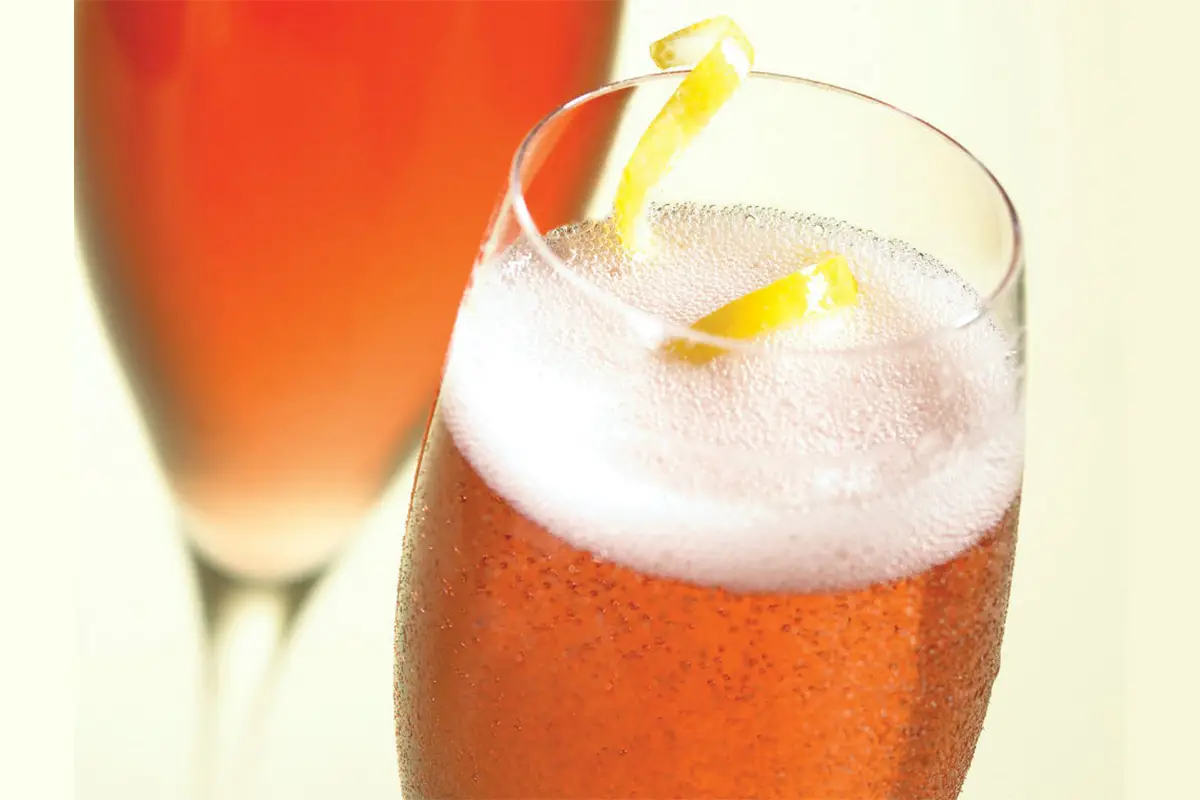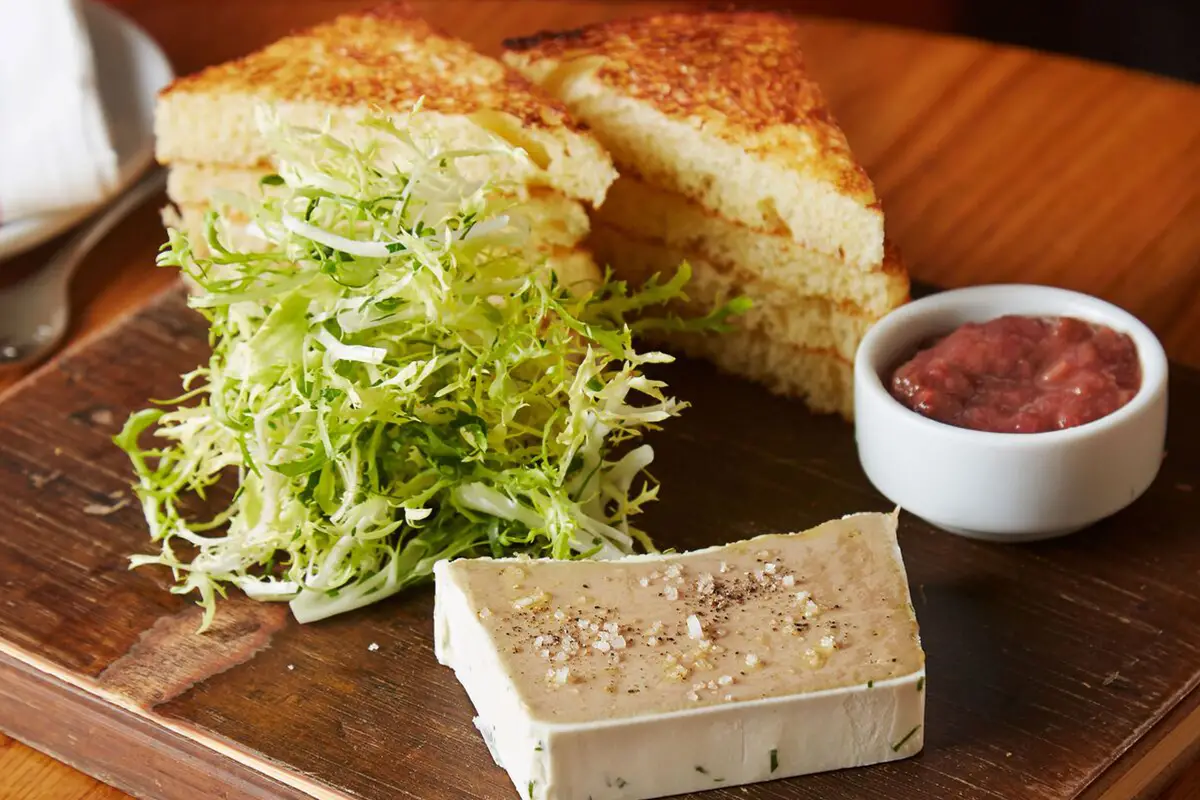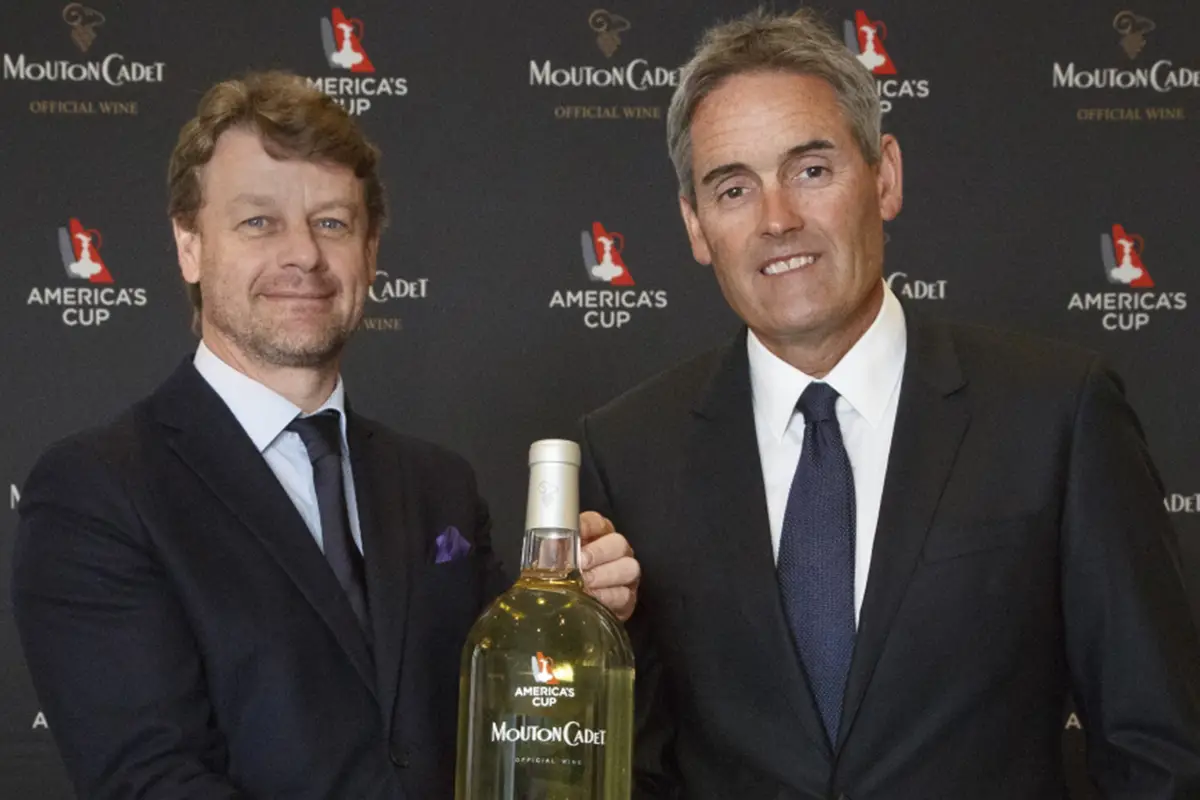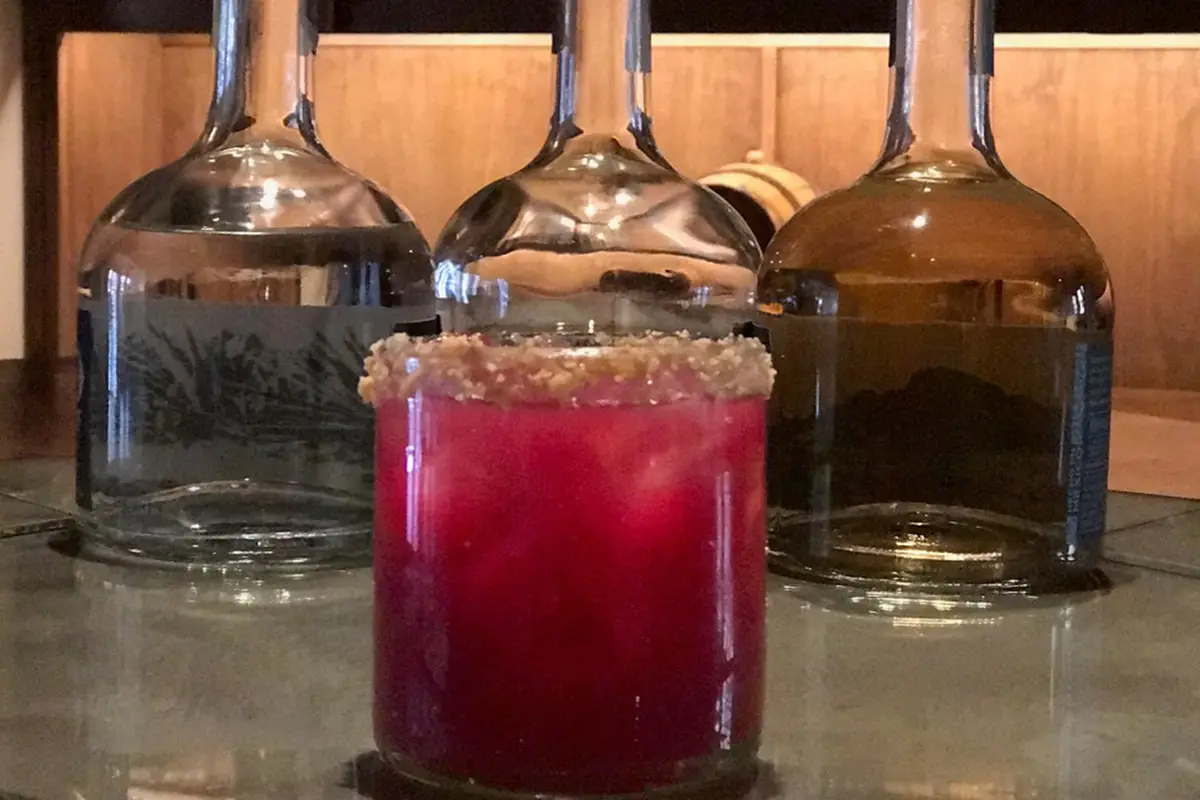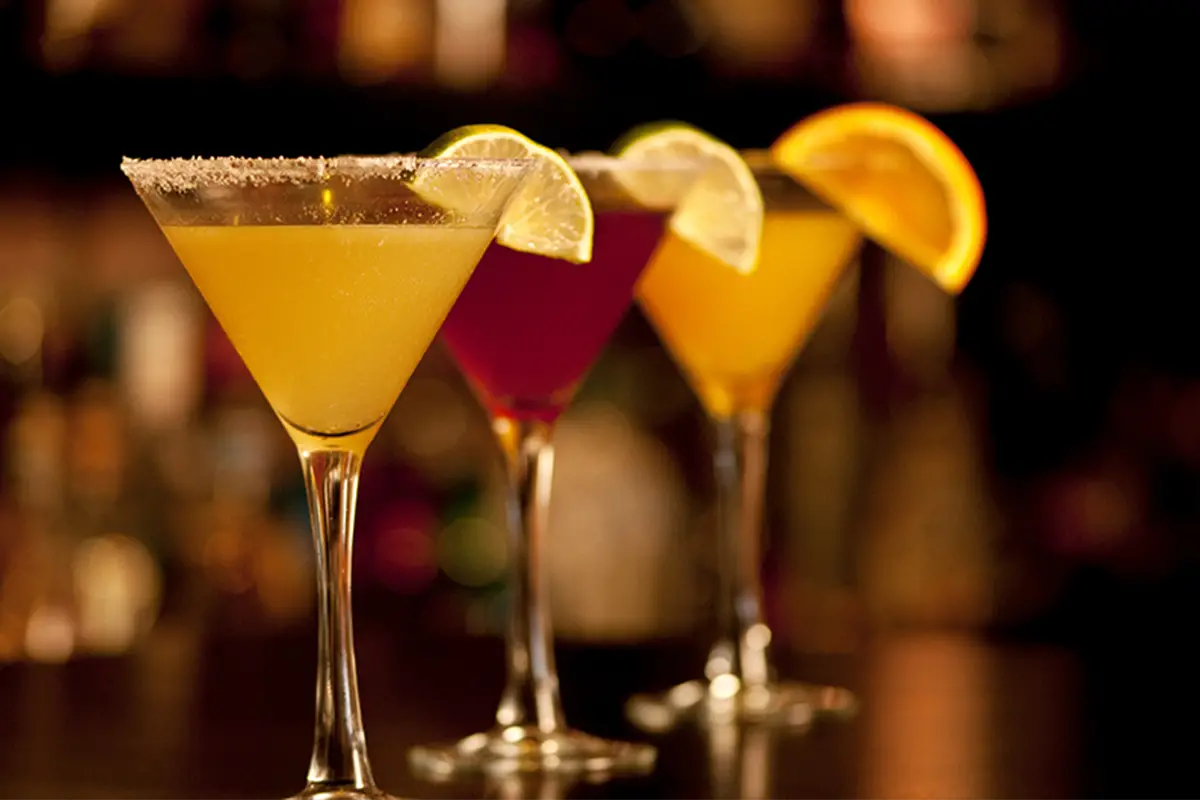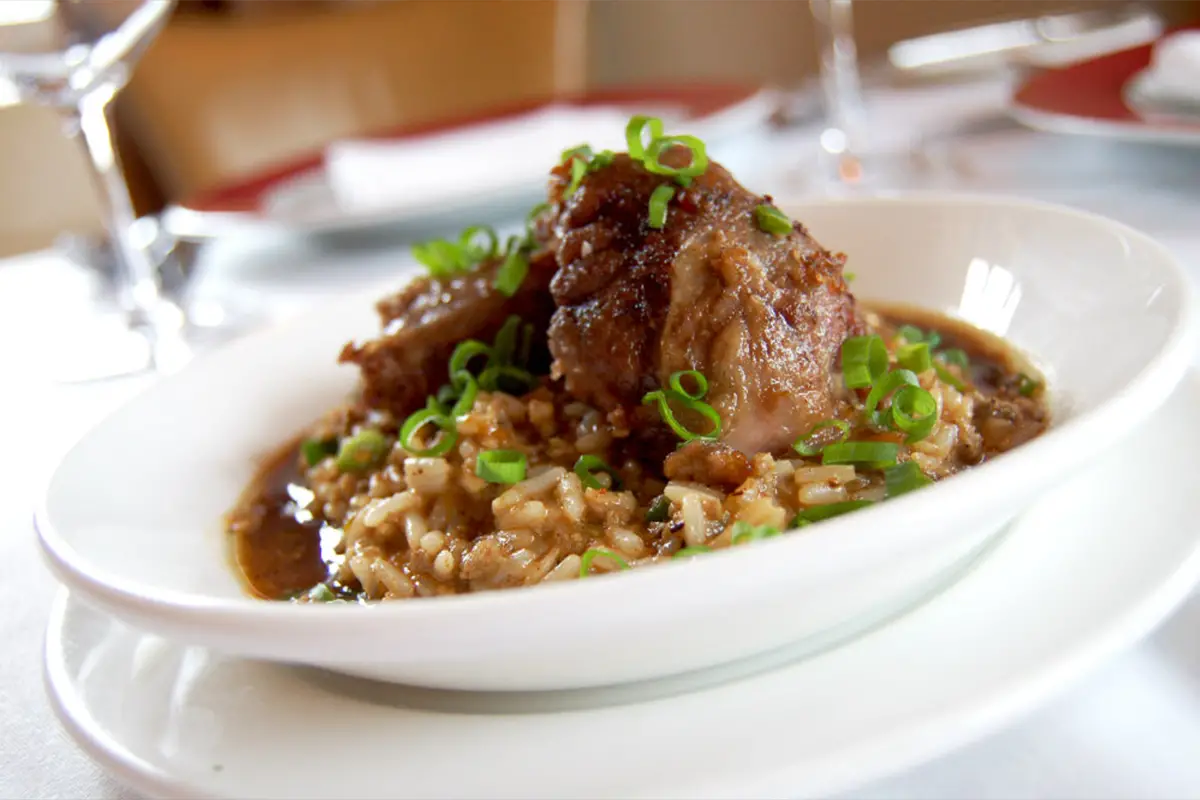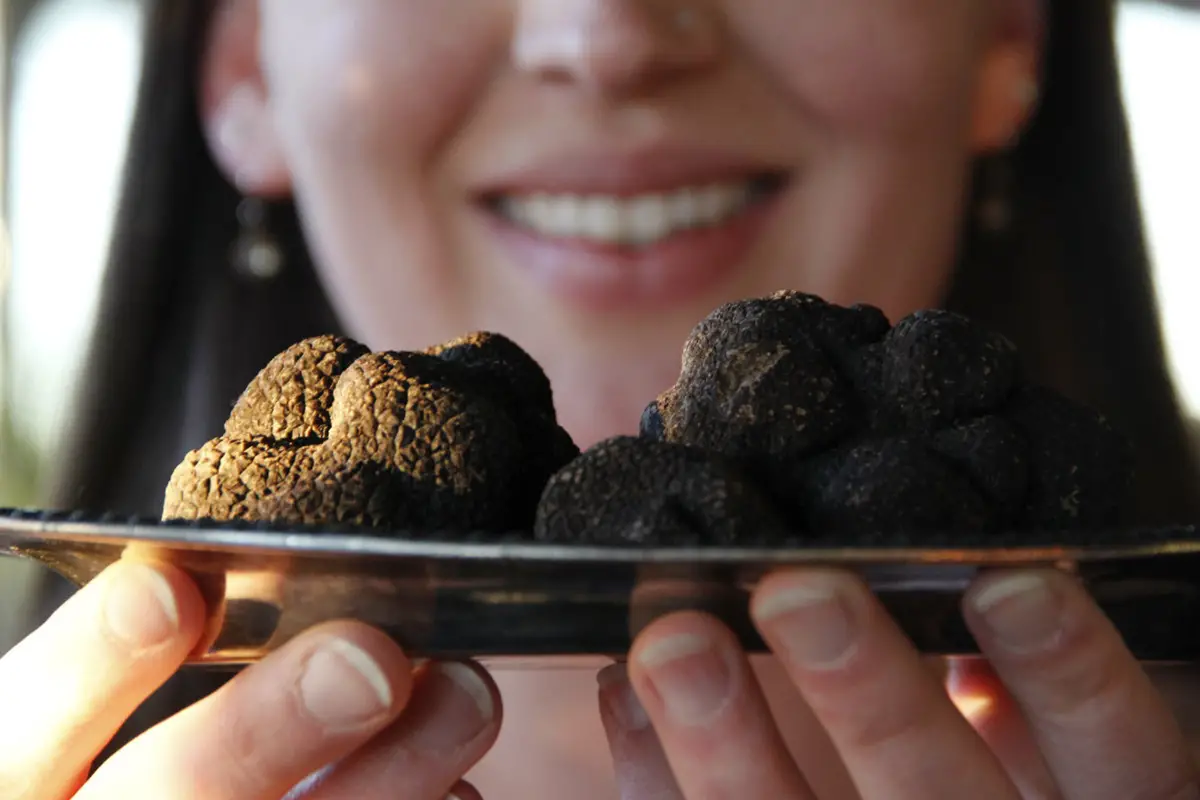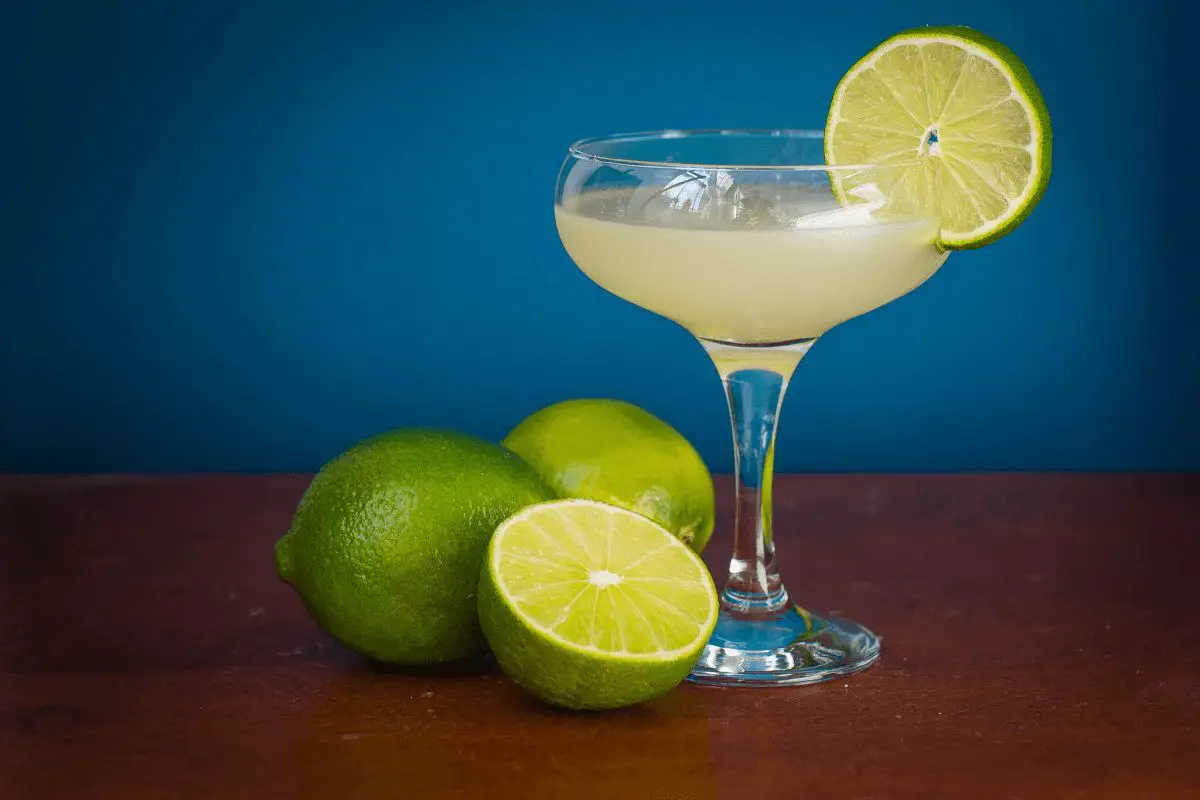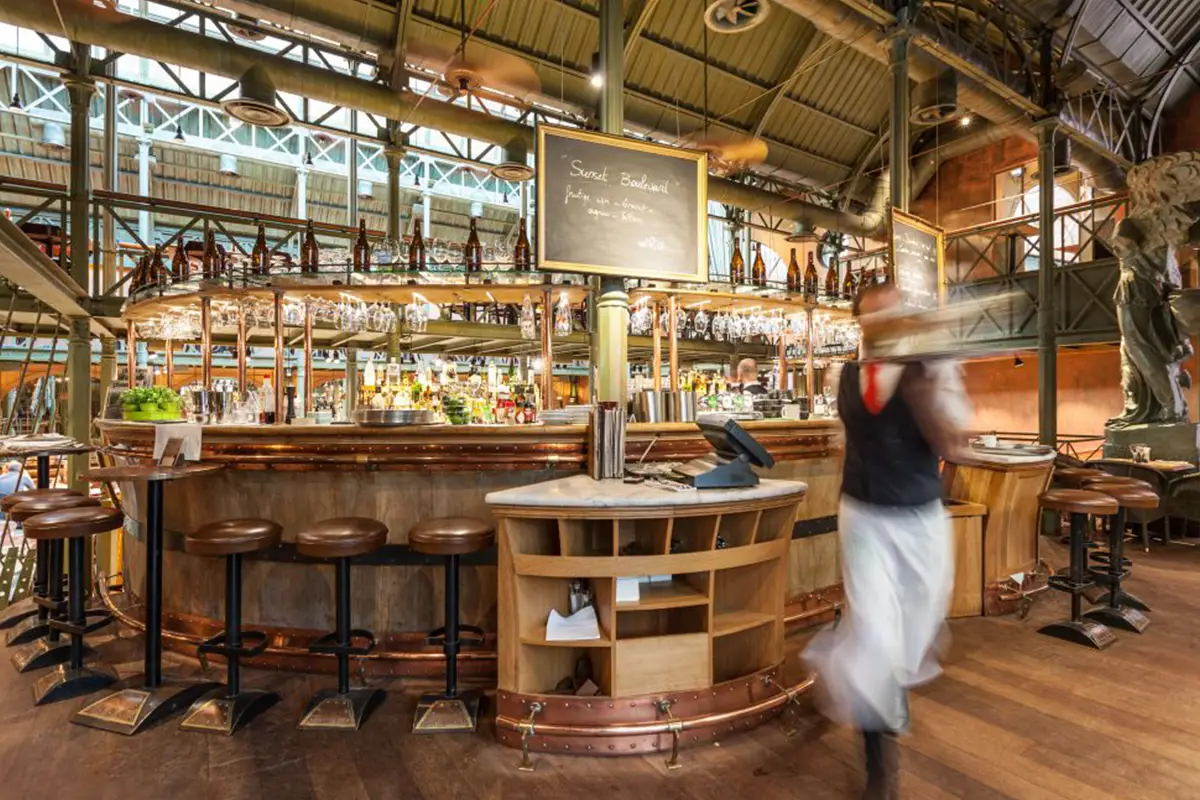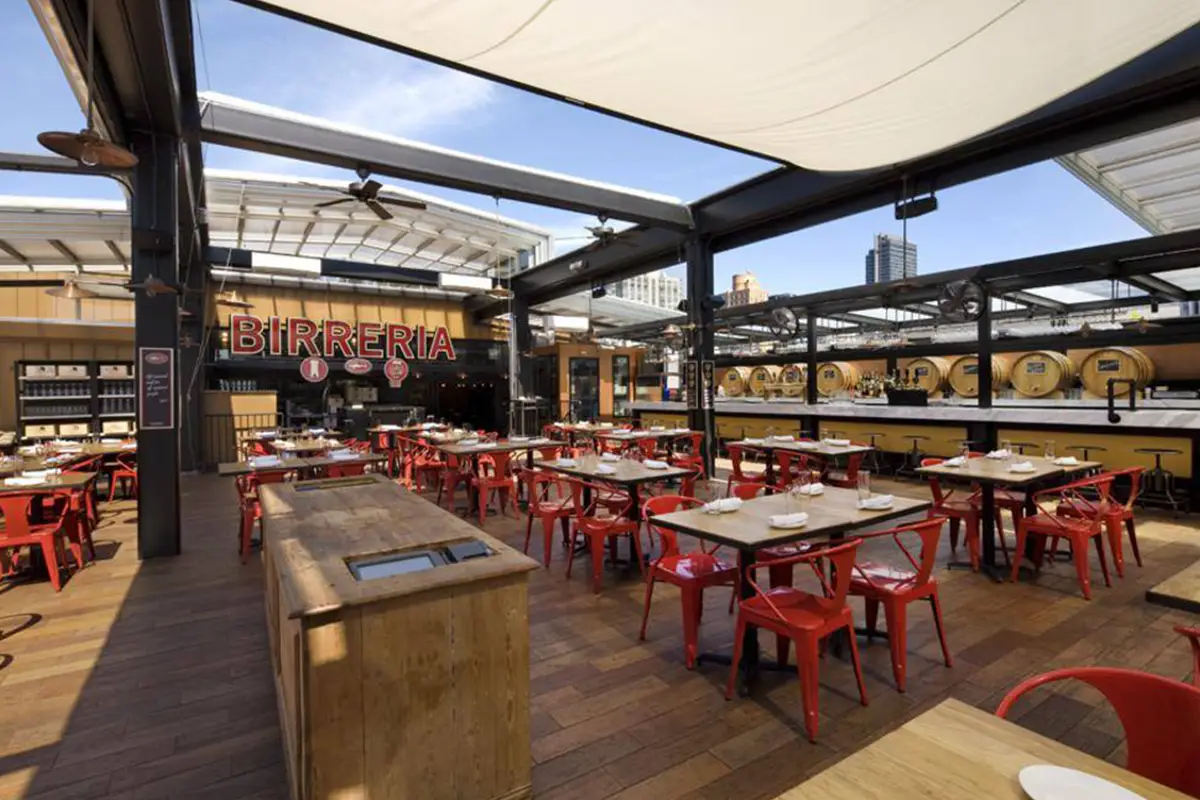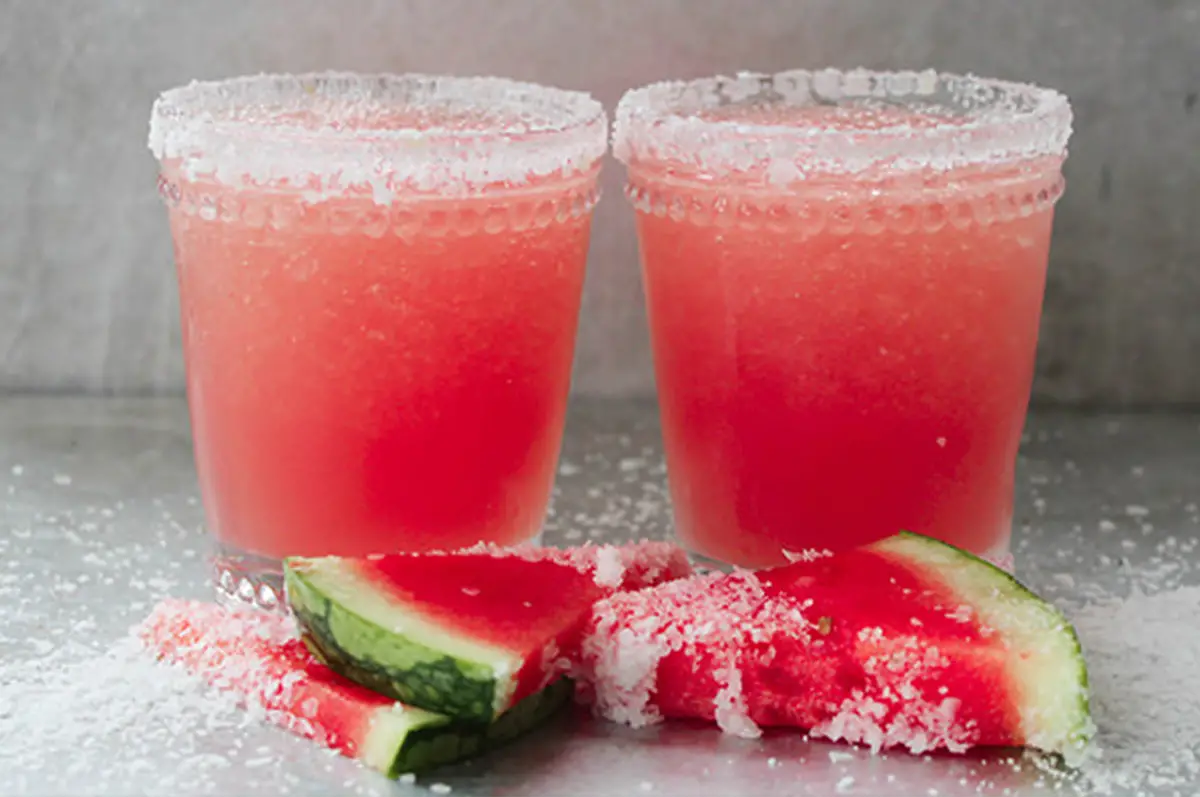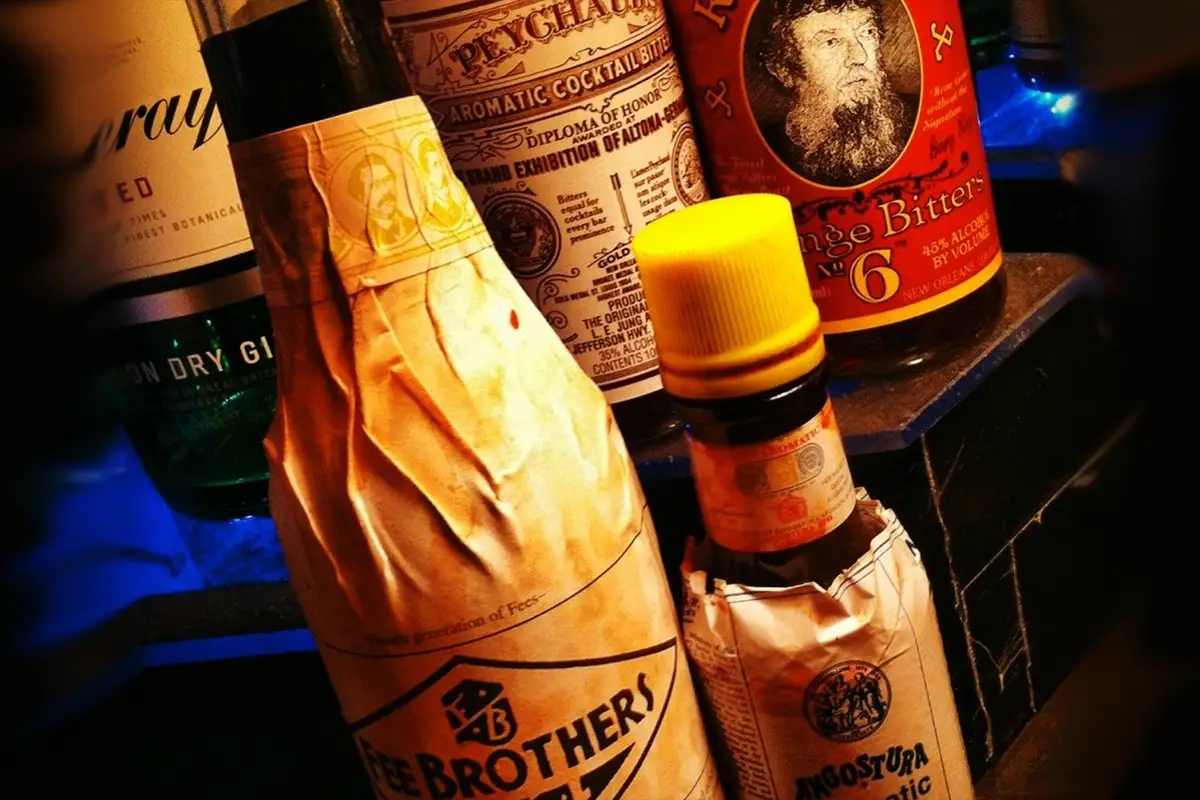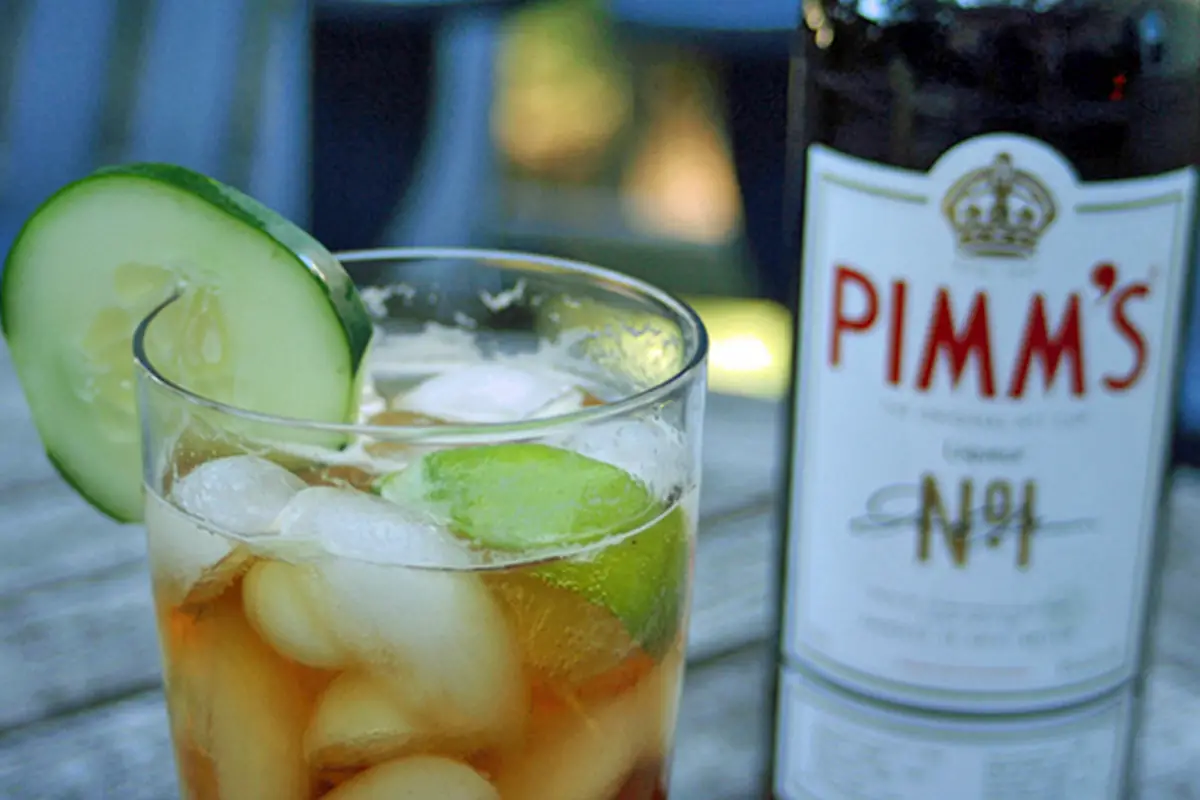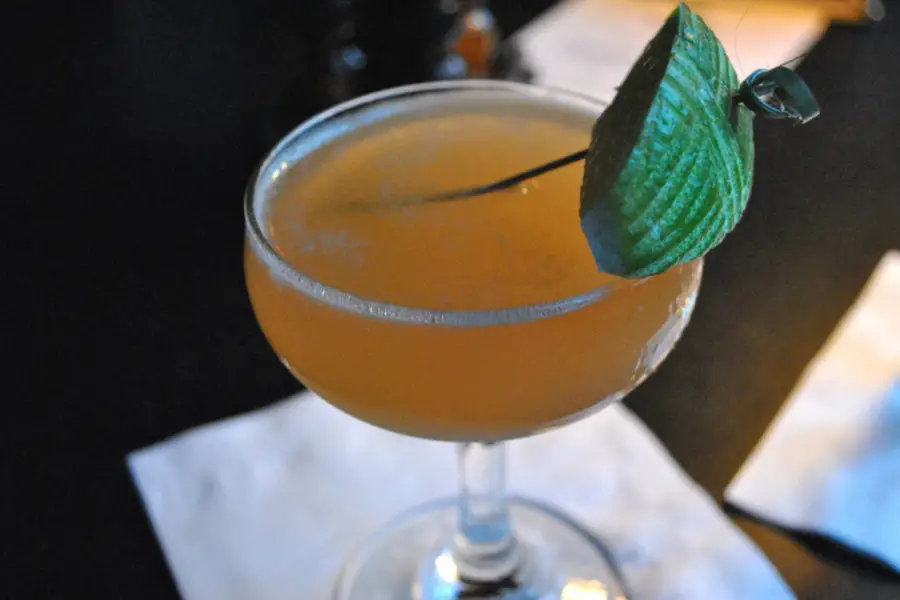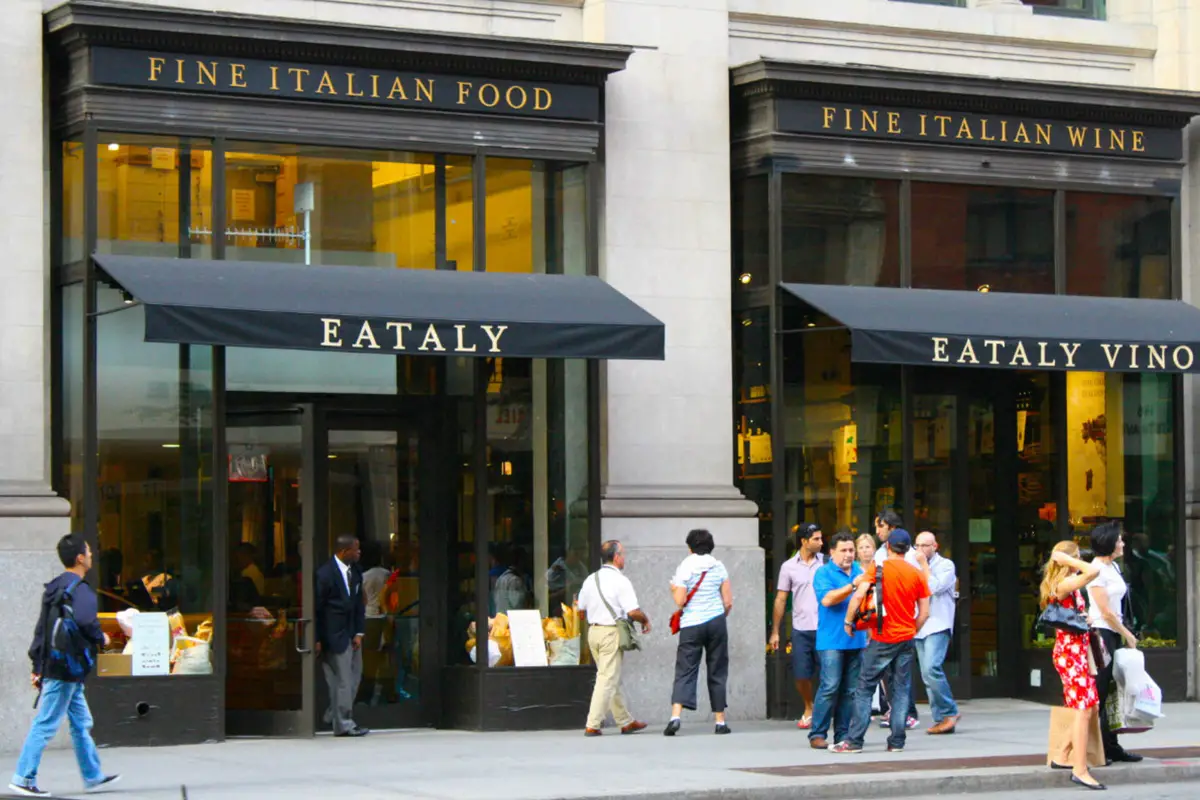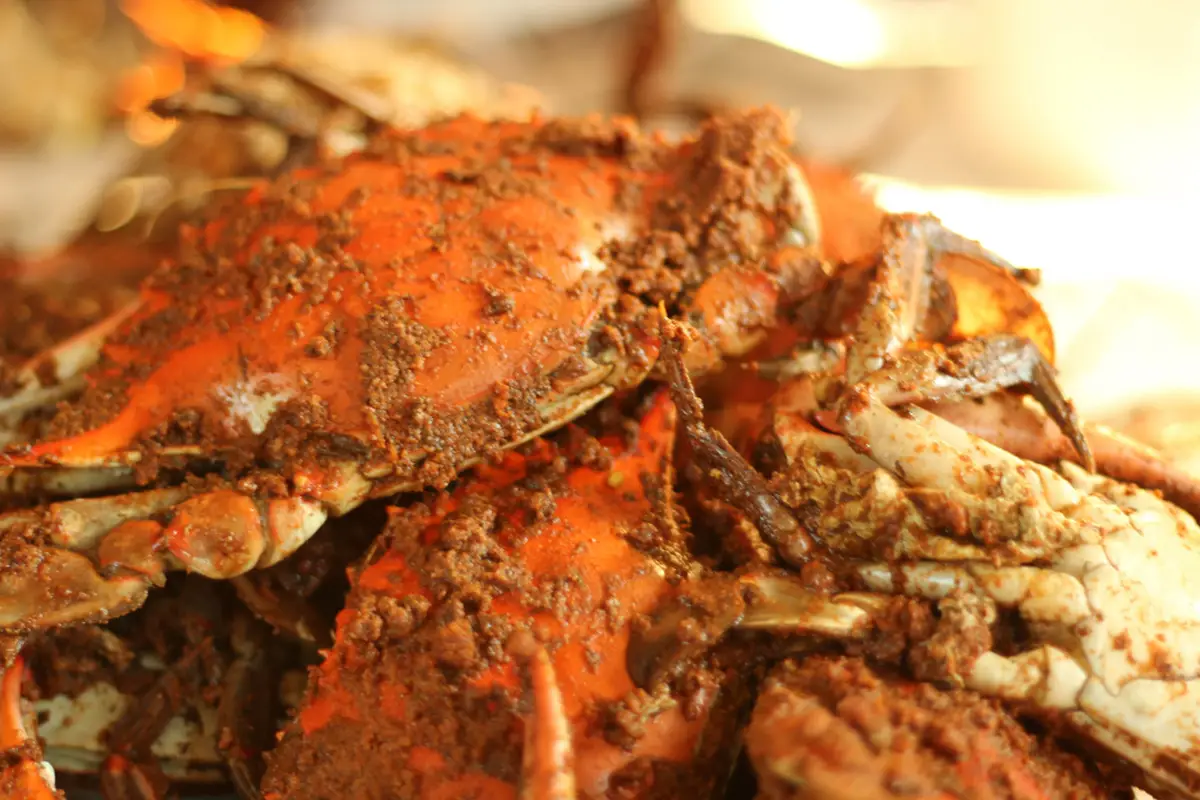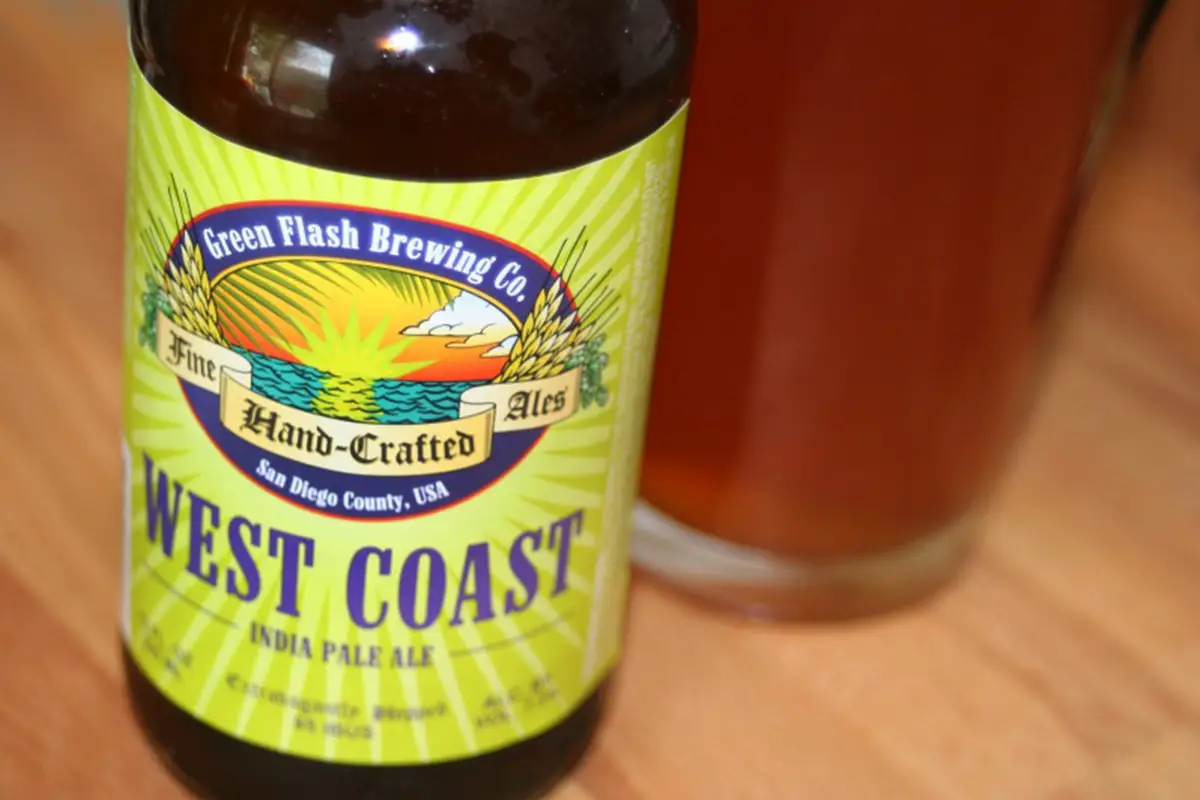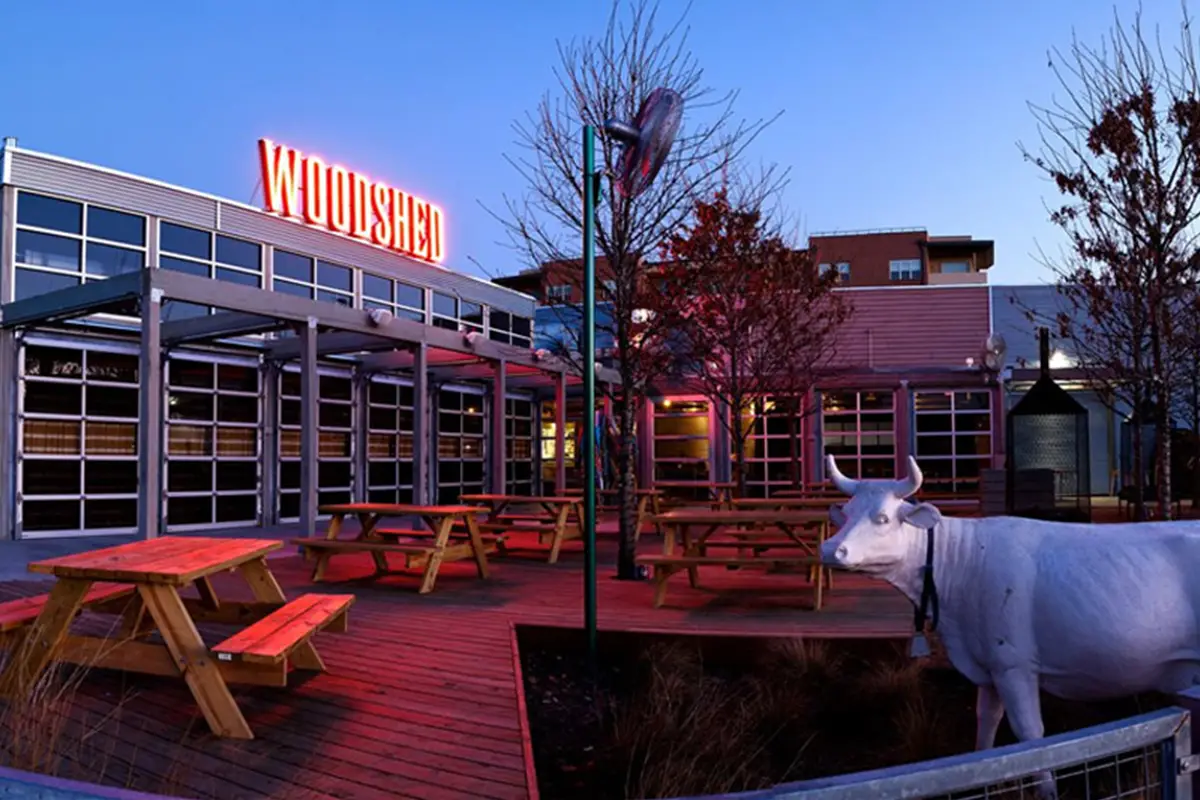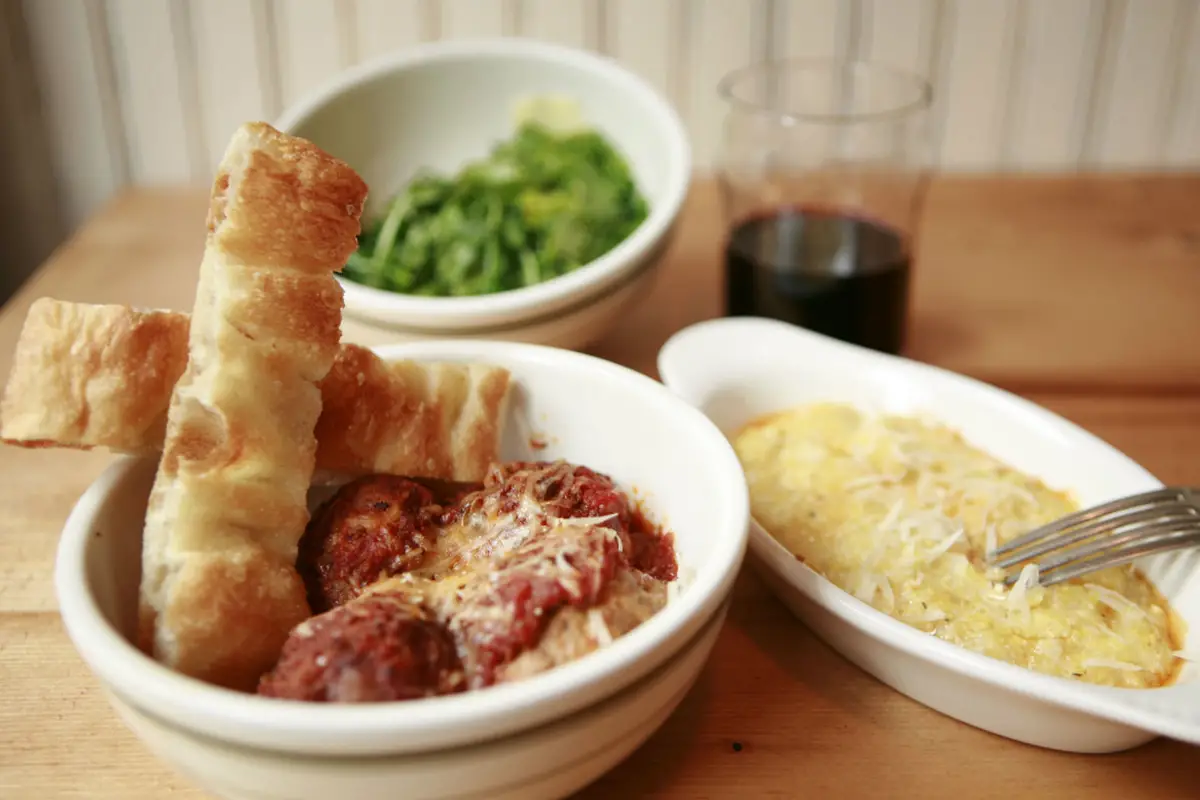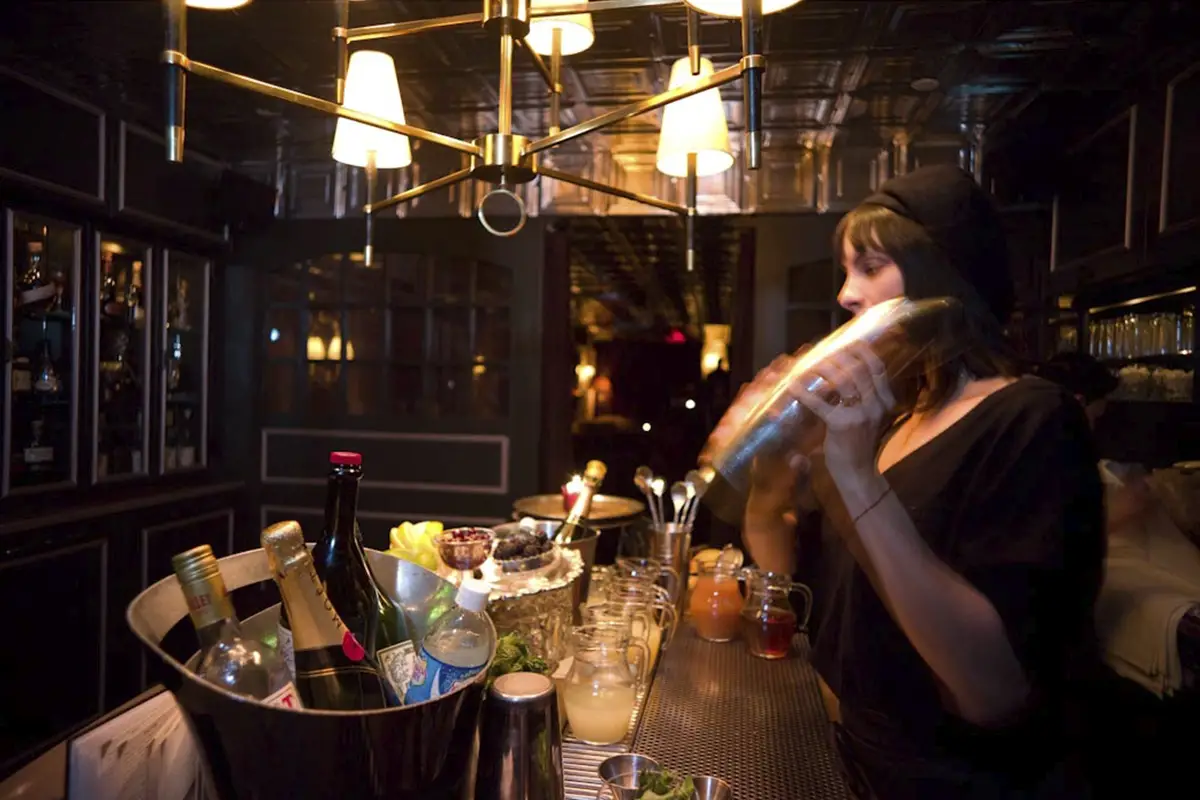The champagne cocktail is a classic libation to ring in the new year. It also works wonderfully at holiday parties with its festive hue. AJ Rathbun, GoodLife Report’s resident mixologist and author of Champagne Cocktails: 50 Cork-Popping Concoctions and Scintillating Sparklers has provided us with some interesting ways to jazz up your champagne toast.
Continue reading
 20 of the most extravagant dishes you can order on UberEATS
20 of the most extravagant dishes you can order on UberEATS
We try to maintain a nice sense of balance at GLR in terms of what we cover and what we deem “the good life.” Nice restaurants and glitzy destinations have their place, but so does a healthy lifestyle and making responsible decisions. But sometimes it’s fun to be a bit highfalutin. Continue reading
 Mouton Cadet Is The Official Wine of America’s Cup
Mouton Cadet Is The Official Wine of America’s Cup
In Bermuda, Mouton Cadet makes debut as the Official Wine of 35th America’s Cup. Continue reading
 Medicinal Margaritas
Medicinal Margaritas
Who says margaritas have to be calorie-laden affairs that do nothing more than get you buzzed while shooting your blood sugar to the moon. From the heart-healthy unsaturated fats found in avocados to the ancient healing properties of traditional Mexican ingredients such as xoconoxtle cactus fruit and damiana herb, superfoods are finding their way into cocktail shakers of mixologists around the world. Continue reading
 Margaritas de Mayo
Margaritas de Mayo
It’s that time of the year again; you know, when you celebrate a holiday for no other good reason except to get your drink on! We’re talking about Cinco de Mayo, and in Southern California you can find a good margarita just about anywhere. It’s the great ones that might take some serious bar-hunting to find, and luckily for you, we’re willing to do the leg work. Continue reading
 Crescent City Cuisine
Crescent City Cuisine
Food is to New Orleans what wine is to France: the city is celebrated worldwide for its delicious albeit unwholesome cuisine. Continue reading
 Best Après Ski in Vail
Best Après Ski in Vail
You’ve had a hard day. Bluebird skies, untracked powder in the Back Bowls and perfectly executed turns on groomers. You feel good. You look good. It’s time to hit the après scene and celebrate, but a basket of wings and a beer just won’t do. Continue reading
 Hottest New Bars In The US
Hottest New Bars In The US
Dining guide Zagat has rounded up a list of what they call the hottest new bars across America which includes a new watering hole by The Dead Rabbit team, known for winning the title of world’s best bar. Continue reading
 A Brief History of the Sazerac, The Original Cocktail
A Brief History of the Sazerac, The Original Cocktail
Celebrate Mardi Gras With The Official Cocktail Of New Orleans (Not a Hurricane)
“The two Sazeracs had loosened her up a little and it looked as if we might become buddies.” —James L. Rubel, No Business for a Lady, (Gold Medal Books, 1950).
 A Tale of Two Truffle Festivals
A Tale of Two Truffle Festivals
There are beer and wine festivals. There are Renaissance festivals. But truffle festivals? Those are a bit more rare in the United States and can be as tough to track down as the famous fungus itself. Continue reading
 A Case of Mistaken Identity
A Case of Mistaken Identity
The last time I ordered a Daiquiri at a bar, my friends gave me a gentle ribbing. This is a common reaction as the word Daiquiri conjures up images of super-sweet frozen cocktails decorated with little umbrellas.
 In Search of the Holy Grail (of Beer)
In Search of the Holy Grail (of Beer)
Everyone in Europe seems to have an opinion when it comes to beer. On a recent Saturday night, I found myself at a pub in Rotterdam. The conversation at my table drifted from Oscar picks to Dutch politics before hitting a lull. To offset the momentary silence, I mentioned Belgian brews. Egor, a Dutch-Irishman sitting across from me, piped up: “Do you know about Trappist beers?” Continue reading
 Best Beer Gardens In U.S.
Best Beer Gardens In U.S.
They date back to the 19th century in Germany and they’re not new in America. Manhattan’s Bohemian National Hall alone dates back to 1895. Nevertheless, beer gardens have enjoyed renewed fanfare in the states recently. Continue reading
 It’s National Watermelon Day!
It’s National Watermelon Day!
No lie. August 3rd really is “National Watermelon Day.” We at GLR can’t even begin to find the history for this one, but HolidayInsights.com speculates a summer holiday celebrating a summer fruit Continue reading
 Bitter Beauties
Bitter Beauties
No, not a room full of your exes – bitters are Weapon X of many a bartender, and the unsung hero of many a classic cocktail. “Think of bitters as the spice rack behind the bar,” says Joe Fee, co-owner of the four-generations-old bitters producer Fee Brothers.
 Perfectly Pimm’s
Perfectly Pimm’s
Unlike the Serve and Volley This Wimbledon Favorite Has a Secret Recipe
The Pimm’s Cup gets its name from Pimm’s No. 1 – a gin based, tea colored liqueur (though some maintain it’s a bitter) that is the base for this classic summer cocktail. Continue reading
 British Revival: The Pegu Club Cocktail
British Revival: The Pegu Club Cocktail
The Pegu Club Cocktail dates back to the late 1800s. It originated at its namesake hangout, the Pegu Club, a social establishment for British officers near the gulf of Martaban in Burma. Continue reading
 Breakfast in Bridgehampton
Breakfast in Bridgehampton
Opened in late 2012, with Tom Colicchio at the helm and a 19th century Greek Revival mansion as its setting, Topping Rose had an instant pedigree that made it a shoe-in among the East End’s must-visit destinations. Happily, it has delivered and should continue to as we enter the busy season out on eastern Long Island. Continue reading
 Innovations in Grazing
Innovations in Grazing
They say that this is the way people shop for gourmet foods in Europe—by snacking and sipping while shopping in large, compartmentalized stores—but will it work in the United States? Looks like it. Roughly five years in the making, both Eataly—Mario Batali’s much-ballyhooed emporium next to Madison Square Park—and Todd English Food Hall—a collection of restaurants in the basement of the Plaza Hotel— remain as popular as ever. Continue reading
 The Old Bay State
The Old Bay State
Whether they’re blue claw crabs off the shores of Long Island or Dungeness crabs from the West Coast, crabs are a delicious and excellent food for summer. While restaurants ship these tasty crustaceans in from a variety of locales, the best crabs are (arguably) from Maryland. Continue reading
 Departure is Cleared for Launch
Departure is Cleared for Launch
Departure looks like something a teenage Tony Stark might have drawn in his spiral notebook while daydreaming in history class. Indeed, this elegant restaurant and lounge high atop the LEED-certified Nines Hotel in downtown Portland, Ore. is as sleekly engineered as Iron Man’s suit. Continue reading
 3 India Pale Ales We Love
3 India Pale Ales We Love

 IPA – The Real King of Beers
IPA – The Real King of Beers
Despite Budweiser’s snarky/defensive commercial during the Super Bowl, craft beer continues to enjoy a rennaisiance of sorts that does not seem to be waning anytime soon. Even Eric Asimov, in a New York Times article waxed poetic about the James Beard Award winning restaurant Eleven Madison Park and their, wait for it, beer menu? Yup, 130 selections that they will pair with any food. Continue reading
 The Art of BBQ
The Art of BBQ
If you have a relative who lives below the Mason-Dixon Line, at some point, they’ve probably preached the gospel of “good barbecue” at you. Down south, it’s, unquestionably, serious business and less a way to kill a lazy Sunday evening than an art form. Continue reading
 Gin Is In
Gin Is In
It may have been invented by a 17th century Dutchman, but today there is no more an oh-so-Anglo spirit than gin. With its unmistakable notes and bouquet of juniper, gin, as one of the “five clears,” makes way into just about every mixed drink in a bartender’s repertoire. Continue reading
 Cold Comfort
Cold Comfort
Cold, dark winter weather that persists for months on end leads many to seek warmth in food; the kind of satisfaction that comes from ingesting lots of calories under the pretense that there are still months left before your weekends will be spent on beaches, pretending you know how to surf. Continue reading
 Whiskies A Go-Go
Whiskies A Go-Go
What a difference an “e” makes. In 2008, New York Times writer Eric Asimov set off thunderbolts when he did up an otherwise non-confrontational whiskey review. His most dire of offenses? He used the American spelling of the spirit: w-h-i-s-k-e-y. And nothing gets a thistle up a Scotman’s kilt like that “e.” Continue reading
 Raine’s Law Room—A New York Speakeasy That Has Stood the Test of Time
Raine’s Law Room—A New York Speakeasy That Has Stood the Test of Time
The “Mad Men” craze sparked the return of a number of retro trends. Bartenders are finally pouring proper cocktails and women’s sheaths and pencil skirts are returning to store shelves. But no homage to the good old days is complete without the speakeasy and New York City has one of the country’s chicest versions. Continue reading
 Paley’s in Comparison
Paley’s in Comparison
Steering clear of the one-size-fits-all chain restaurant box, Paley’s Place has made its mark on the West Coast restaurant scene with a distinctive convergence of French, Eastern European and Pacific Northwest influences, and dynamic emphasis on local, sustainable and seasonal. The intimate charm is found amidst a historic Victorian house in the Northwest District of Portland, seating a mere 50 patrons. With a cozy front porch, open air patio and two dining rooms, one gets the sensation of stepping into the home of close friends.
Kimberly Paley, general manager and co-owner, became a front-of-house maverick after putting in her time at Bouley, Gotham Bar & Grill and Alison, while chef and co-owner Vitaly Paley earned his culinary chops in the hot kitchens of Remi, Chanterelle, and Union Square Café. The two foodies met eyes while working at Moulin de la Gorce, a two-star Michelin restaurant in France and well, as they say, the rest is history.
In “The Paley’s Place Cookbook: Recipes and Stories From the Pacific Northwest,” the Paleys illuminate why they couldn’t help but pick Portland as their final destination to start a restaurant due to the region’s access to superior ingredients. “Oregon reminded us of France, where ingredients are stars. In New York’s kitchens, I saw you could get anything any time. I also noticed that not much came from close by. While Kimberly and I didn’t necessarily want ours to be a French restaurant, we knew we wanted to sustain what we learned in France about being closer to the sources of food.”
The cookbook won the Best Regional Cookbook award by Epicurious in 2008, in part for sharing genuine, personal narratives that help the reader get to know the restaurant’s farm suppliers, such as greens and garlic grower, George Weppler and third generation potato guru Gene Thiel. Chef Paley was also recognized with the James Beard Award for “Best Chef of the Northwest” in 2005 for his advanced culinary technique and dedication to supporting local farm-to-table food of the Pacific Northwest. With a menu that changes daily, his muse comes from such local gems as Highland Oak Farm grass-finished beef, Quinault River Steelhead from the prized fisheries of the Quinault reservation and fresh veggies from the likes of Creative Growers Organic Farm.
If your winter taste buds take a gander at Paley’s most recent menu, you might observe some daring seasonal dishes including Rabbit Ravioli with bacon or Oregon Dungeness Crab Risotto enhanced by wild mushrooms and white truffle butter. Local flavor doesn’t desert the dessert, with Oregon candied kumquats finding their way into the Chèvre Cheesecake of winter citrus, sugared almonds and pistachios. Meanwhile, heirloom squash hides graciously among the delicate morsels of Warm Financier Cake with golden raisin verjus beneath a milk chocolate sherbet.
Their Sustainable Seafood Sundays draw a crowd, an event created with the intention of teaching diners about local, sustainable seafood options while tasting it for themselves. These dinners foster a conversation about the environmental issues behind how and where fish is caught, with the hopes that customers will leave with the knowledge to make more conscientious seafood choices.
Paley’s has gone so far as to create their own line of organic bars which they sell at specialty grocers and gourmet cheese shops. One favorite is Handmade at Paley’s Fruit & Nut Bar, a dense cheese condiment Paley came up with when he was unable to find a quality companion for his cheese menu.
The recipes of this Northwest star have caught the gaze of the New York Times, Bon Appétit, Wine Enthusiast, NPR and even Oprah Magazine, with whom Paley shares his enthusiasm for seasonal cuisine: “As the [cherry] harvest begins, I literally lie awake thinking about what I’m going to cook tomorrow. The beauty of seasonal cooking is that you get to rediscover an ingredient every time it reappears.”
Chef Paley’s culinary prowess secured him a spot on “Iron Chef America” in 2011, where he reigned victorious over Chef Jose Garces in a radish battle, claiming that being from the Soviet republic of Belarus gave him a leg up on how to utilize the entire radish plant in a variety of ways.
For those strolling down lovers’ lane to Paley’s Place for that romantic day in February, have a seat in their bar and bistro for a local bottle of Riesling from the Willamette Valley, aptly named Love and Squalor (2010) – while there still is a seat, that is…
1204 Northwest 21st Ave.
Portland, Ore. 97209
(503) 243-2403
Hours:
Monday-Thursday: 5:30 p.m. to 10:00 p.m.
Friday-Saturday: 5:30 p.m. to 11:00 p.m.
Sunday: 5:00 p.m. to 10:00 p.m.
 Wines on Tap
Wines on Tap
When one hears the word keg, it might conjure up images of college students sloppily chugging back beer from the tap at a late night party. Ironically, kegs are finding themselves in much classier settings these days, and they aren’t necessarily filled with beer. Wine kegs are sweeping restaurant and bar establishments alike who are looking for a new edge that is not only more environmentally sound but can also save them cash and keep wines fresh for longer.
Wine on draft appears to be more than just a passing trend, predicts Mat Duggan, general manager of Palmina Winery. His establishment has kegs in over 30 of its California restaurants. Duggan tells LA Weekly, “In 10 years, the majority of wine by the glass programs will be on a tap system.”
It’s not a shocker that most businesses currently serving wine on tap are in California at ahead-of-the-curve hotspots like Lukshon in Culver City, Delfina Pizzeria in San Francisco and the Wine Cask in Santa Barbara. But what might come as a surprise is that a restaurant in Atlanta called Two Urban Licks boasts the most extensive wine keg program in the United States with a “wine wall” they claim is one of a kind. This 26 feet high temperature controlled tower contains 42 stainless steel barrels highlighting a gravity flow system which allows for easy wine pouring.

Wine Cask
But don’t be fooled by such fancy setups – modern vintners and restauranteurs aren’t exactly reinventing the wheel here. They are, in fact, returning to a tradition that dates back to ancient wine-making times, when using a tap to dispense the liquid was the easy, low-technology and most prevalent way to serve it.
Going With the Eco-Flow
So, sorry cleverly-labeled, sleek-figured bottles, but kegs win the “who’s the greenest” battle, hands down. Wine kegs are typically converted from soda or beer kegs, weighing in at 5.15 gallons or 26 750ml wine bottles. It doesn’t take a math whiz to figure out that every time a keg is returned to a winery, refilled and reused, it’s saving a lot of glass bottles from having to be shipped, kept in storage and then either thrown out or put back into the recycling system (a system that while necessary, in and of itself can be highly energy intensive in operating recycling plants and trucks). Kegs eliminate the packaging waste that comes along with a bottling system – boxes, printed bottle labels, screw caps, corks, etc. Transporting boxes of bottles uses shipping space much more inefficiently than kegs, requiring more trucks, more shipping and therefore more greenhouse gas emissions.
Taste From the Tap
Wine is kept fresh in a keg with the help of inert gases like argon and nitrogen that get pushed into the container via a low-pressure mechanism, which then simultaneously forces the wine out when tapped. The fact that the gas doesn’t react with the wine makes it an ideal guardian for defending wine against its malevolent adversary, oxygen.
Proponents of wine kegs say preservation from oxidization is a major taste benefit, as kegs extend the length of time a wine is able to remain fresh: some wines can keep in kegs for roughly a year under the appropriate temperature.
Kegs also keep wines more reliable in their flavor profile, mirroring the nearest thing to that right-out-of-the-barrel taste. Wines which are more inclined to be fit for kegs are wines that are best savored in their youth. Kegs seem like a much better alternative to cracking a bottle open, only to have it sit too long and either oxidize, have its flavor go awry or spoil altogether.
Cash in Pocket, Not Down the Drain
Wine industry specialists approximate that a wine keg and tap system reduces production costs by 10-25 percent, making it possible to turn around and sell that wine to customers at a better price point, as well. Michael Ouelette, a wine keg businessman, illustrates to NPR that many wineries are looking to kegs as one way to help the wine industry get back on its feet after being adversely impacted by the recession.
“There’s a surplus of quality inventory and because of that, wineries are opening their marketing strategy to other formats,” explains Ouelette. “But once they start and see how smart and green it is, they’re embracing the concept.”
Establishments switching to keg programs also save money on product because bottle service can tend to waste a good sum of wine, literally forcing them to pour money down the drain. Think of how many bottles are opened at restaurants or bars for just one or two glasses. The rest of that bottle often can’t be used because it has been recorked, gone off or lost its intended flavor experience for the consumer – who pays for that wasteful system with higher wine-by-the-glass prices. Squandering away wine puts a huge hole in businesses’ pockets – an expense that appears unnecessary in light of wine kegs.
Chef and owner of Father’s Office restaurants, Sang Yoon, reflects on these savings to The New York Times: “You have to calculate in your pricing the wine you didn’t sell, the wine you had to throw away…I can’t remember having had a positive wine-by-the-glass experience unless the bottle was freshly opened. As an owner, you also come to realize how wasteful wine by the glass becomes. As a result, your pricing has to reflect that waste, so most places serve cheap wine with big markups for glass pours, which equals bad value for consumers.”

Chef/Owner Sang Yoon of Father’s Office (Photo by Kevin Scanlon for The New York Times)
Thinking Outside the Bottle
Take-home wine growlers and canteens have become a subsequent no-brainer riding on this wave of wine kegs. Dave Potter’s Municipal Winemakers allows folks to walk away with refillable glass growlers of their ever-changing varietals, the original costing $25 and refills coming in at $20. Innovative wineries like Natural Process Alliance exclusively sell wine by the keg and also give customers the option of buying their wines in ¾ liter reusable steel canteens.
Other wineries such as Lioco, Flowers Vineyard & Winery and Silvertap Winery are jumping on the keg bandwagon, as well. They are realizing this new system can draw in long-standing wine aficionados who are getting over traditional notions that wine should only be served in a bottle, as well as novices who might be attracted to the “on tap” concept as a more green and less intimidating entryway into the world of wine.
 How to Make a Tom Collins and Why It is Often Misunderstood
How to Make a Tom Collins and Why It is Often Misunderstood
The Tom Collins is a classic example of a purist cocktail that fell from grace after grocery stores began stocking their shelves several decades ago with the mass produced, heartburn-inducing sour mix. It’s been written about since 1876—Jerry Thomas, widely considered the father of mixology wrote The Bar-Tender’s Guide in 1862. The original recipe was made with gin, lemon juice, sugar and soda water. Remember to mix the gin, lemon juice and sugar (or simple syrup) first, before adding soda water.
Ingredients:
2 Ounces Dry Gin
Juice of 1 lemon
1 to 2 teaspoons superfine sugar, or simple syrup*
Soda Water
*An authentic Tom Collins should not be too sweet, but if you really need to watch your sugar intake try making it with Truvia – an all-natural, zero calorie sweetener (made from stevia) that is used in brands such as Vitaminwater Zero, Odwalla and Hanson’s Natural Low-Cal Juice.
Directions
Pour the gin, sugar and lemon juice into an empty Collins glass and stir until the sugar is dissolved. Add ice and finish with an ample amount of soda water—approximately half a glass. Garnish with an orange or lemon slice. Remember to add plenty of soda water. Too little soda water will result in an acidic, sweet, gin-laden drink, which may make you angry and result in heartburn and a hangover the next morning.
A slightly different version of the drink, using Old Tom Gin gained popularity around the turn of the century and the recipe still lives on today among those in the know. Our resident cocktail expert, AJ Rathbun weighs in on another style of the age old classic.
AJ’s Take:

Tom Collins #1:
A combination that’s rolled pretty steady in the last century and a quarter (plus another 10 or 15 years), except for one monumental change: for a long while, we were lacking at our drinking-holding fingertips Old Tom gin, a sweetened gin which was the pre-eminent ingredient here, and which lead to the name, Tom Collins. Luckily, in the recent past, a few traditional Old Tom style gins have been released (such as the delicious Hayman’s Old Tom gin). So, today, you have two options (and will see two options when out, depending on the reach of your local). First, you can make it in classic style with an Old Tom gin. Second, you can use a little sweetner (sugar or simple syrup) to make up the difference when using a regular dry gin. Once there were many Collins’ drinks available (including the John Collins, exactly the same as the TC but made using the drier Holland Gin—this might be equated today with a gin such as Bols Genever or any gin saying it’s Jenever), and currently others don’t make the muster roll at most establishments. The formula is a fine one though, so try it at least with other liquors as well as gin: whiskey and brandy add their own nice touches.
With a drink that’s lasted as long as the Tom Collins, it’s bound to have shaded into various societies, too. Originally much heavier and more sugary (as were many drinks at the time), it played well in the top hot spots allowing ladies and gentlemen both, and had a hip cache amongst those in the booze know. Before long, as other potent potions came around, and as tastes and styles changed, the Tom Collins shifted its popularity to a more conservative constituency, as it began to be poured more in the middle part of last century by and for those who favored tightly trimmed hair and neatly pressed trousers. Today, it’s had a renaissance of sorts with the young professional type looking to unwind and recharge after a long day at the cubicle.
Whoever is drinking it, two things have to be remembered. First, our palate has changed, shifting to a love of drier drinks (and with the lack of Old Tom gins). With that firmly in mind, be careful when sliding in the simple syrup. There’s no need to cause tooth decay while drinking a classic. Secondly, the bubbles here need to be of the energetic variety. Never make a Tom Collins with old club soda, or you’ll fall as flat in the eyes of those consuming the drink as the soda itself. If available, use a soda siphon–if not, buy the club soda as close to constructing the drink as possible, and chill it beforehand. As Jerry Thomas said in 1862 about the Collins, “imbibe while it is lively.”
Tom Collins #1
2-1/2 ounces Old Tom gin
1/2 ounce freshly squeezed lemon juice
Chilled club soda
Lemon slice for garnish
1. Fill a cocktail shaker halfway full with ice cubes. Add the gin and lemon juice. Shake well.
2. Fill a Collins glass three-quarters full with ice cubes. Strain the mix over the ice. Top off with chilled club soda. Garnish with a lemon slice.
A.J. Rathbun is the author of Good Spirits: Recipes, Revelations, Refreshments, and Romance, Shaken and Served with a Twist (Harvard Common Press, 2007) and other books. All of his books, including the soon-to-be-released Champagne Cocktails and In Their Cups are available at www.amazon.com/ajrathbun
